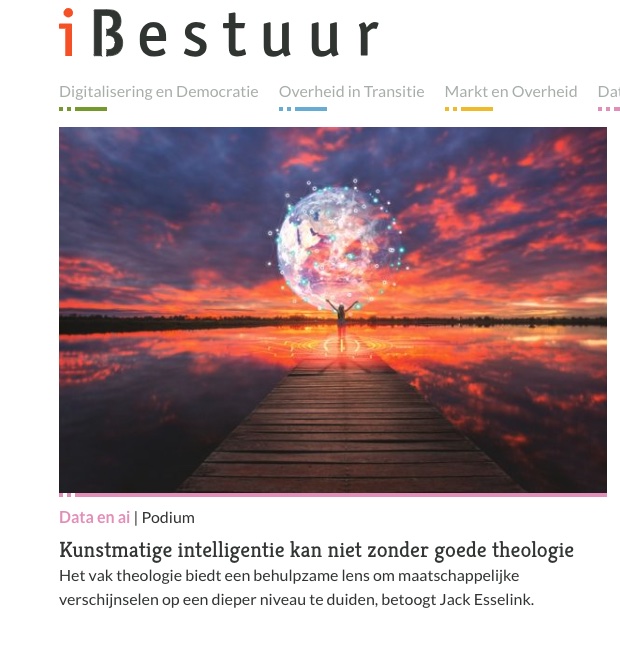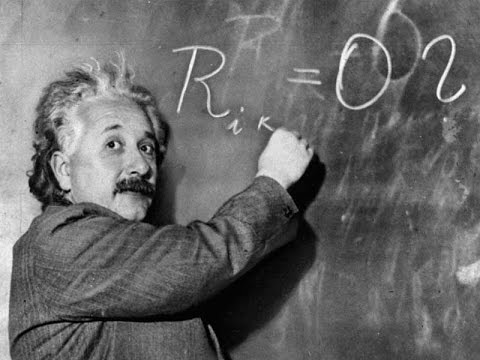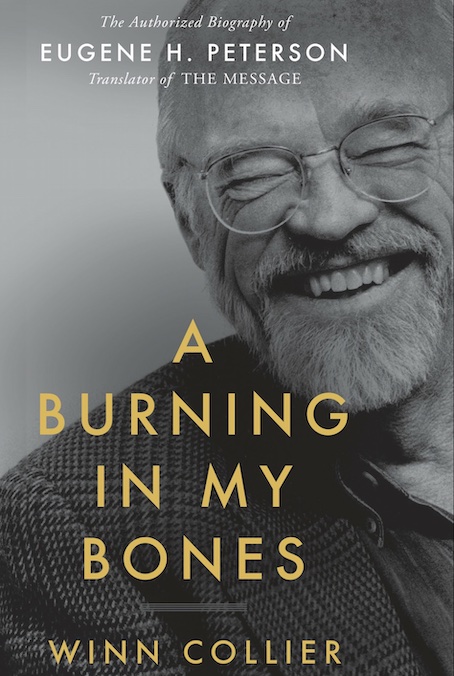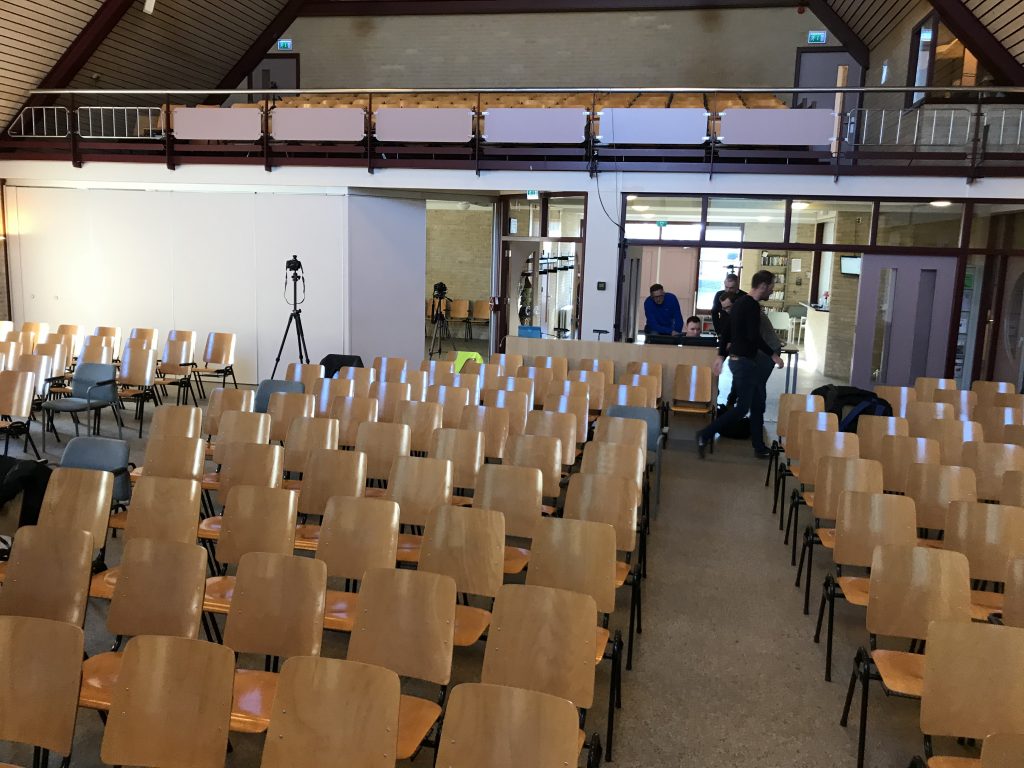I. Introduction
During one of the many occasions when the physicists Albert Einstein and Niels Bohr met, Einstein told Bohr that God doesn’t play dice, on which Bohr replied: “Einstein, stop telling God what to do!”[1] This anecdote is about the question whether or not God uses chance in the universe and is loosely related to the topic of this article. In this article I would like to explore the following research question “what role does quantum physics plays in the fine-tuning argument for God’s existence.” The article starts with explaining the ontological framework being used (§2) and in the next section (§3) a short description of the fine-tuning argument will be given. Subsequently a brief introduction to quantum physics (§4) will be made and in §5 two quantum physical topics will be explained in the context of the fine-tuning argument. The last section contains the conclusion (§6) and a suggestion for further research.
II. Ontological framework
In this article all discussed topics are deeply rooted in physics, however these topics will be evaluated and described in an object-oriented ontological framework. This framework is based on the notions of objects, atomism and causalism and is similar to the framework being used in Rutten’s first-cause argument.[2] The reason for using this framework is that the concept of atomism has a natural fit with quantum physics and its independence on any metaphysical modal notion makes it more intuitive than other first-cause arguments.[3] On this framework everything is defined as an object. An object is defined as “something that exists”, something which can have causal relations with other objects (causalism) and consists of (mereological) atoms.[4] For this article this high-level framework suffices as it provides sufficient context to describe the fine-tuning argument and quantum physics (QP) in the next sections.
III. Fine-tuning
Our universe is full of objects that are in (causal) relationships with each other and the universe is governed and brought about by various laws, constants and initial conditions of nature. Physics is the field in science that describes and explains all this, often using mathematical expressions. Physicists have found out that intelligent life in our universe is possible because “the laws, initial conditions, and the fundamental parameters of physics must be precisely set for life to exist,” in other words, our universe is fine-tuned for life as we know it.[5] Since a couple of decades physicists have been conducting what-if analyses by changing the values of the constants and initial conditions, and it turns out that even only very small deviations would make life impossible in our universe. One example would be that a change in the gravitational constant of only one part in 10100 would “have prevented a life-permitting universe.”[6] The fine-tuning of the universe is not just a coincidence, but it is what William Dembski calls “specified complexity”, i.e. a high improbability and independently given pattern, which makes it go beyond chance and cries out for an explanation.[7] Both theists and non-theists have come up with various explanations for this, and according to Craig all explanations can be classified as either chance, physical necessity or design.[8] For theists it is highly probable that there must be a designer in order to create a life-permitting universe which is often explained using Bayesian statistics.[9] Recently, Robin Collins has developed an additional theistic fine-tuning argument in which he claims that the universe is not only fine-tuned for life but also for scientific discovery.[10] Atheistic philosophers disagree with theistic explanations and have alternative non-theistic explanations. I will cover some explanations and objections to this in §5 in the context of quantum physics.
IV. Quantum physics
QP is the field in physics that studies and describes reality at the level of microscopical particles.[11] Despite it being generally considered to be the most important and most fundamental theory for describing our world, many physicists use it, but not many really seem to understand it. The famous American physicist Richard Feynman even said “I think I can safely say that nobody understands quantum mechanics.”[12] QP is describing reality using mathematical formalisms, but there is “no uniformity of opinion about how that formalism is to be interpreted.”[13] Back in 1935 Albert Einstein already concluded that QP wasn’t able to provide a complete description of physical reality which leaves room for multiple interpretations.[14] The most important reason for this, and the most important metaphysical innovation that QP brought about opposed to classical physics, is the shift from determinism to chance.[15] There are two main schools of thought in interpreting QP: one is the indeterministic Copenhagen interpretation, brought about by Niels Bohr and Werner Heisenberg in 1927 and the other is the deterministic interpretation which is e.g. formulated by David Bohm in 1952.[16] From a philosophical standpoint this is a predominant epistemological phenomenon and doesn’t impact at the teleological level of our argument. On our ontological framework of causalism, objects are being caused by free will or by determinism and randomness is not a feature of reality.[17] Despite differences in interpretation everyone agrees that QP is the most important theory we have at hand to describe reality and in the next paragraph two aspects of QP that are related to the fine-tuning argument will be covered.
“I think I can safely say that nobody understands quantum mechanics”
Richard Feynman – American Nobel-prize winning physicist
V. Quantum aspects of fine-tuning
In this section the following quantum aspects of fine-tuning are being covered: anthropic principle and many-worlds. For each aspect I will provide a brief overview of the aspect and its objections.
Anthropic principle (role of the observer)
One of the most interesting aspects of QP experiments is the role of the observer. Suppose a quantum experiment E in which the behavior of particle P is being measured. P can have two states: 0 and 1. When E is conducted unobserved, P can be in superposition i.e., P can have the value 1 and 0 at the same time.[18] If E is being conducted observed, P has either value 1 or 0. From a metaphysical perspective this introduces “the observer, and irreducible subjectivity, back into physics at the most fundamental level.”[19] In its most radical form this view suggests that the universe could have been brought about by a conscious observer.[20] In the context of fine-tuning, proponents of the chance hypothesis, will appeal to the role of the observer, which is often referred to as the anthropic principle. The anthropic principle states that any observer O can only observe properties that “are compatible with our existence” and O cannot account for any properties that cannot be observed. From this it follows that it is very likely that O will find the fine-tuned elements for her existence.[21] The anthropic objection holds that once O gets rid of her bias because of observation-selection the argument for fine-tuning no longer holds.[22] It is very likely that O observes fine-tuned parameters for life in her universe, but she cannot infer that “it is therefore that such a fine-tuned universe exists.”[23] Many critics have argued forcefully that the observer’s role is overstated and cannot undercut the argument for fine-tuning. It is important though, to be aware of the role O plays and Matthew Kotzen argues to use the observation-selection effect as evidence, rather than background information, in the Bayesian equation for fine-tuning.[24] I think Kotzen’s proposal makes the argument for fine-tuning even more sound since it embraces the role of the observer. It remains remarkable though what role the observer plays at both the lowest atomic and at the highest cosmic level.
Many-worlds
One of the leading interpretations in QP is Hugh Everett’s ‘many-worlds’ theory. The theory holds that when E is conducted, every value for P obtains in a different world. O only observes the value of P obtained in the world she inhabits and there is no interaction with the other worlds.[25] According to this theory the universe is in a continuous superposition without us noticing it, in other words, the many-worlds theory describes reality at its most fundamental quantum level and the way we perceive the world is an approximation of reality. Despite this theory being counterintuitive, it is to many leading physicists the only theory that is capable of delivering breakthroughs in QP.[26] In QP many worlds exist in only one universe. A common explanation to fine-tuning by many non-theist scientists is the many-universes or multiverse hypothesis. This is described by Collins as “many regions of space-time […] with different initial conditions, constants of physics, and even laws of nature.”[27] The multiverse explanation is often used in conjunction with the anthropic principle to increase the odds for explaining fine-tuning as chance but remains a controversial perspective. It has been calculated by Roger Penrose that the probability for a universe with a low entropy like ours, to come about by chance is the inconceivable number of 1:1010(123).[28] This is one of the reasons why the multiverse explanation cannot hold in my opinion. Rodney Holder, however, thinks that the ‘many-universes hypothesis’ is a valid explanation for fine-tuning, in addition to theism (he makes a case for theism being the most viable argument, but he considers the multiverse a solid alternative theory.)[29] He states that one interpretation of the multiverse could be the continually branching many-worlds, if we would accept Everett’s interpretation of QP to be the correct one.[30] I think the many-worlds interpretation is an interesting interpretation for QP, but it doesn’t add much weight in the fine-tuning argument because the numbers still cry out for an explanation.
VI. Conclusion
In this article I have explored the relationship between the fine-tuning argument and QP. Our universe is fine-tuned for life and in my opinion, theism provides the best explanation for this. QP is the best theory we currently have to describe physical reality at the lowest atomic level. QP is capable of providing an epistemological explanation of the physical reality against a backdrop of a fine-tuned universe. Even though some QP interpretations may bring in chance and apparently (virtual) particles popping in and out of existence out of nothing, it still does not explain why our universe is fine-tuned. God isn’t throwing dice on the ontological framework used in this paer and ultimately, to quote Einstein: “everything should lead back to conceptual objects in the realm of space and time and to lawlike relations that obtain for these objects.”[31] Since our universe seems to work according to quantum rules, it is no surprise a lot of research is being conducted in this field to better understand the universe and to leverage this concept in e.g. quantum computing to help answer big scientific questions. So, as a suggestion for further research, I would like to propose how a concept like naturalness in the framework of quantum field theory can be interpreted in the context of the fine-tuning argument for life.[32]
Bibliography
Collins, Robin. “The Argument from Physical Constants.” In Two Dozen (or so) Arguments for God: The Plantinga Project, edited by Jerry L. Walls and Trent Dougherty, 89-107. New York: Oxford University Press, 2018.
Collins, Robin. “The teleological argument: An exploration of the fine-tuning of the universe.” In The Blackwell companion to natural theology, edited by William Lane Craig and J. P. Moreland, 202-281. Chichester UK: Blackwell Publishing, 2012.
Craig, William Lane. Reasonable Faith (3rd Edition) : Christian Truth and Apologetics. Wheaton IL: Crossway, 2008.
Einstein, Albert, Boris Podolsky and Nathan Rosen. “Can Quantum-Mechanical Description of Physical Reality Be Considered Complete?” Physical Review 47, no. 10 (1935): 777–780.
Feynman, Richard. The Character of Physical Law. Cambridge: MIT Press, 2017.
Friederich, Simon. “Fine-Tuning.” The Stanford Encyclopedia of Philosophy. First published 17 August 2017. https://plato.stanford.edu/archives/win2018/entries/fine-tuning/.
Rodney Holder. “Fine-Tuning, Multiple Universes and Theism.” Noûs 36, no. 2 (2002): 295-312.
Isaacson, Walter. Einstein: His Life and Universe. New York: Simon & Schuster, 2008. Kindle Edition.
Maudlin, Tim. “Distilling Metaphysics from Quantum Physics.” In The Oxford Handbook of Metaphysics, edited by Michael J. Loux and Dean W. Zimmerman, 461-488. Oxford: Oxford University Press, 2005.
Rutten, Emanuel. “Towards a Renewed Case for Theism : A Critical Assessment of Contemporary Cosmological Arguments.” PhD diss., Vrije Universiteit Amsterdam, 2012.
[1] Walter Isaacson, Einstein: His Life and Universe (New York: Simon & Schuster, 2008), 326.
[2] Emanuel Rutten, “Towards a Renewed Case for Theism : A Critical Assessment of Contemporary Cosmological Arguments” (PhD diss., VU Amsterdam, 2012), 123-136.
[3] Rutten, “Towards,” 123.
[4] Rutten, “Towards,” 124.
[5] Robin Collins, “The Argument from Physical Constants,” in Two Dozen (or so) Arguments for God: The Plantinga Project, eds. Jerry Walls et al (New York: Oxford University Press, 2018), 89. Italics added.
[6] William Lane Craig, Reasonable Faith (3rd Edition) : Christian Truth and Apologetic (Wheaton IL: Crossway, 2008), 158.
[7] Craig, Reasonable, 160.
[8] Craig, Reasonable, 161.
[9] Simon Friederich, “Fine-Tuning,” The Stanford Encyclopedia of Philosophy, First published 17 August 2017, https://plato.stanford.edu/archives/win2018/entries/fine-tuning/.
[10] Collins, “Physical constants,” 89.
[11] For a good introduction to QP see e.g. https://plato.stanford.edu/archives/fall2020/entries/qm/.
[12] Richard Feynman, The Character of Physical Law (Cambridge: MIT Press, 2017), 129.
[13] Tim Maudlin, “Distilling Metaphysics from Quantum Physics,” in The Oxford Handbook of Metaphysics, eds. Michael Loux et al (Oxford: Oxford University Press, 2005), 463.
[14] Albert Einstein et al, “Can Quantum-Mechanical Description of Physical Reality Be Considered Complete?” Physical Review 47, no. 10 (1935): 780.
[15] Maudlin, “Metaphysics,” 469.
[16] Rutten, “Towards,” 67.
[17] Rutten, “Towards,” 67.
[18] Maudlin, “Metaphysics,” 464.
[19] Maudlin, “Metaphysics,” 472.
[20] Maudlin, “Metaphysics,” 472.
[21] Craig, Reasonable, 165.
[22] Friederich, “Fine-tuning.”
[23] Craig, Reasonable, 165. Italics added.
[24] Kotzen mentioned in Friederich, “Fine-tuning.”
[25] Maudlin, “Metaphysics,” 467.
[26] The American physicist Sean Carroll advocating for the many-worlds theory during a lecture for the British Royal Institution. Lecture accessed on 30 December 2020 and is available at https://www.youtube.com/watch?v=5hVmeOCJjOU
[27] Robin Collins, “The teleological argument: An exploration of the fine-tuning of the universe,” in The Blackwell companion to natural theology, eds. William Lane Craig et al (Chichester UK: Blackwell Publishing, 2012), 256.
[28] Craig, Reasonable, 165.
[29] Rodney Holder, “Fine-Tuning, Multiple Universes and Theism,” Noûs 36, no. 2 (2002): 295.
[30] Holder, “Fine-Tuning,” 301.
[31] Einstein quoted in Isaacson, Einstein, 462.
[32] See for an introduction to the concept of naturalness Friederich, “Fine-Tuning.”








